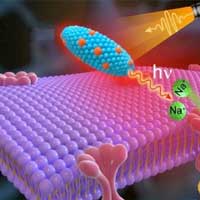 This new treatment involves stimulation of neurons deep within the brain by means of injected nanoparticles that light up when exposed to X-rays (nanoscintillators) and would eliminate an invasive brain surgery currently in use.
This new treatment involves stimulation of neurons deep within the brain by means of injected nanoparticles that light up when exposed to X-rays (nanoscintillators) and would eliminate an invasive brain surgery currently in use.
Wednesday, March 24, 2021
Shining a healing light on the brain with nanoscintillators
 This new treatment involves stimulation of neurons deep within the brain by means of injected nanoparticles that light up when exposed to X-rays (nanoscintillators) and would eliminate an invasive brain surgery currently in use.
This new treatment involves stimulation of neurons deep within the brain by means of injected nanoparticles that light up when exposed to X-rays (nanoscintillators) and would eliminate an invasive brain surgery currently in use.
Semiconductor qubits scale in two dimensions
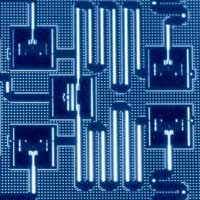 Researchers have shown that semiconductor technology can be used to build a two-dimensional array of qubits to function as a quantum processor.
Researchers have shown that semiconductor technology can be used to build a two-dimensional array of qubits to function as a quantum processor.
Shining light to make hydrogen
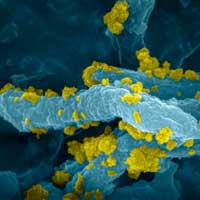 Researchers engineer light-driven bacterial factories to produce hydrogen.
Researchers engineer light-driven bacterial factories to produce hydrogen.
Small robot swimmers that heal themselves from damage (w/video)
 Researchers have developed small, swimming robots that can magnetically heal themselves on-the-fly after breaking into two or three pieces.
Researchers have developed small, swimming robots that can magnetically heal themselves on-the-fly after breaking into two or three pieces.
Fighting cancer with DNA origami
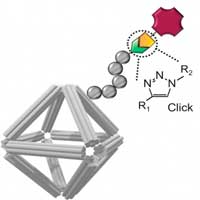 A new approach to functional and physiologically stable DNA origami for biomedical applications.
A new approach to functional and physiologically stable DNA origami for biomedical applications.
Copper foam as a highly efficient, durable filter for reusable masks and air cleaners
 Researchers have transformed copper nanowires into metal foams that could be used in facemasks and air filtration systems. The foams filter efficiently, decontaminate easily for reuse and are recyclable.
Researchers have transformed copper nanowires into metal foams that could be used in facemasks and air filtration systems. The foams filter efficiently, decontaminate easily for reuse and are recyclable.
Coated zinc sulfide nanoparticles are catalytically active
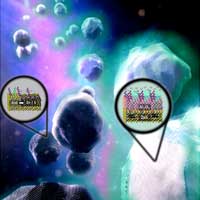 Scientists discovered a way to retain zinc sulfide's brilliant color and also enable its use as a catalyst; for example, to convert sunlight into usable energy.
Scientists discovered a way to retain zinc sulfide's brilliant color and also enable its use as a catalyst; for example, to convert sunlight into usable energy.
The arrangement matters: how to design advanced thermoelectrics
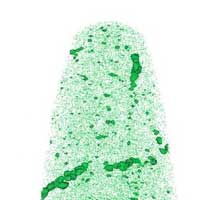 Researchers were able to significantly reduce the thermal conductivity of lead-tellurium thermoelectrics without increasing the dislocation density. For the first time, it is demonstrated that the arrangement of the dislocations and their composition are as important as their amount.
Researchers were able to significantly reduce the thermal conductivity of lead-tellurium thermoelectrics without increasing the dislocation density. For the first time, it is demonstrated that the arrangement of the dislocations and their composition are as important as their amount.
Scientists finds new inroads in fast charging for lithium-ion batteries
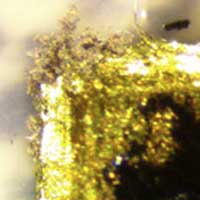 Scientists have long thought the laws of physics limited how fast you could safely recharge a battery, but new research has opened the door to creating a battery that can be recharged in just a fraction of the time.
Scientists have long thought the laws of physics limited how fast you could safely recharge a battery, but new research has opened the door to creating a battery that can be recharged in just a fraction of the time.
Wafer-thin nanopaper changes from firm to soft at the touch of a button
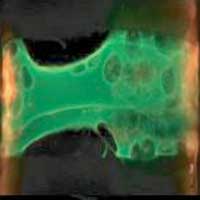 Bioinspired cellulose nanofibrils can be controlled by electricity / Strength and stiffness can be modulated via an electrical switch.
Bioinspired cellulose nanofibrils can be controlled by electricity / Strength and stiffness can be modulated via an electrical switch.
Subscribe to:
Comments (Atom)
